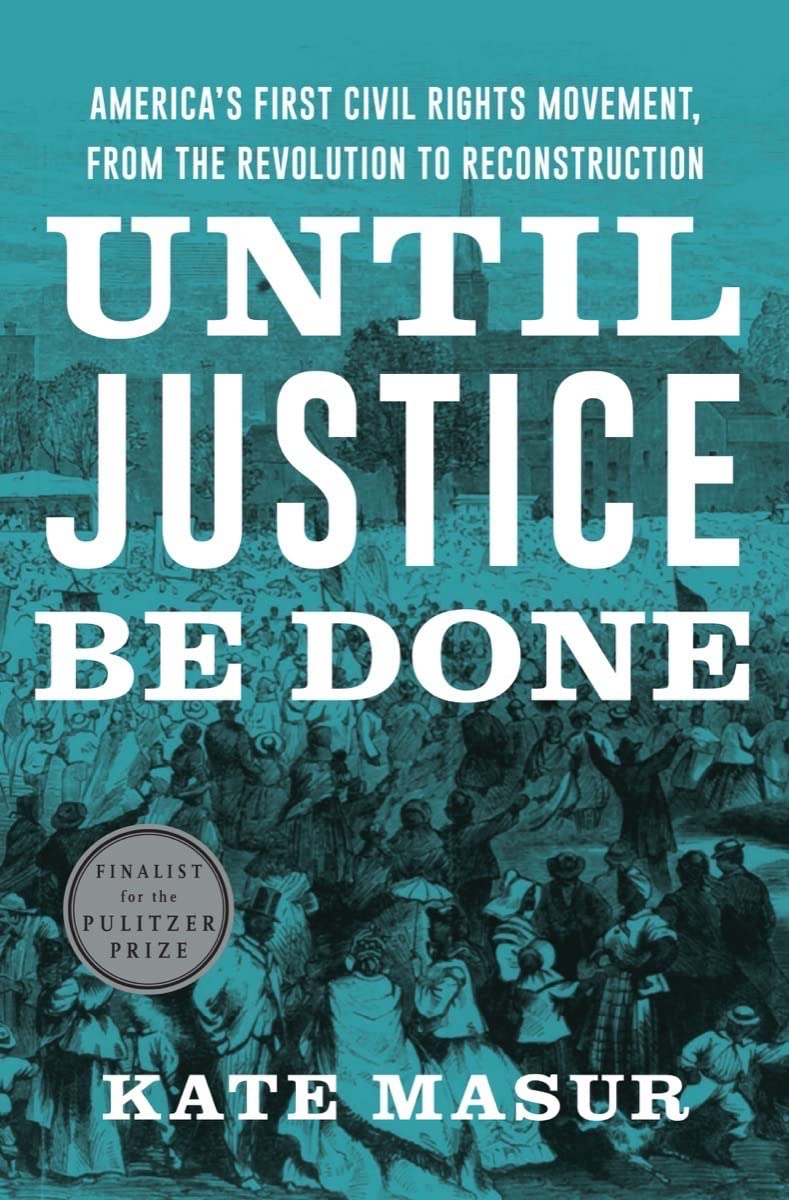The pre–Civil War North, it seems, was a landscape not of unremitting white supremacy but of persistent struggles over racial justice, inspired largely by the egalitarian ideas of the American Revolution, that were led by antiracist whites as well as Blacks and that actually overthrew anti-Black laws. These struggles helped in important ways to precipitate the war and culminated in the ratification of the Fourteenth and Fifteenth Amendments, described by Eric Foner, among others, as a “second founding” that revolutionized, Foner writes, “the status of blacks and the rights of all Americans.”6 The crucial history of these antiracist politics, their connections to the triumph of American antislavery, and their influence on the rewriting of the Constitution after Emancipation are an enormous and, until now, largely untold story. Kate Masur’s Until Justice Be Done and Van Gosse’s The First Reconstruction go a long way toward telling it.
There is no shortage of books on Black politics in pre–Civil War America. For decades, historians have been assiduously reclaiming the lives and work of activists famous and obscure, ranging from abolitionist agitators to eloquent church and community leaders to fugitives from enslavement whose daring helped press the slavery issue to the center of national debates. Yet Masur, a historian at Northwestern, and Gosse, a historian at Franklin and Marshall, have expanded the field of study in important ways by examining antiracist as well as antislavery campaigns and by exploring Black involvement in more mainstream electoral politics. Apart from challenging the desolate view of northern racism, they also grapple with the tensions that arose between independent Black efforts and biracial politics, finding strains but also remarkable cooperation and amity among Blacks and whites.
Masur’s subtitle, “America’s First Civil Rights Movement, from the Revolution to Reconstruction,” is a trifle misleading, insofar as the first civil rights movement she describes was for the most part an aspect of the larger antislavery movement. At a deeper level, though, it is telling, as is Gosse’s seemingly incongruous title describing Black electoral politics during the same period as “the First Reconstruction.” Between 1780 and 1804, all seven of the original states north of Delaware either abolished slavery or commenced its abolition, and beginning with Ohio in 1803, every state entirely north of the Ohio River or west of the Rocky Mountains that entered the Union—ten in all prior to 1860—did so with slavery formally barred. Yet almost everywhere, slavery’s elimination or exclusion led to discriminatory legislation and judicial rulings aimed at subordinating free Blacks or excluding them outright. Several states, including New York and Pennsylvania, restricted or eliminated political and civil rights that Blacks had previously enjoyed. Masur and Gosse are concerned with this repressive political aftermath of the first (or northern) phase of emancipation, hence their allusions to the first civil rights movement or the first Reconstruction.
